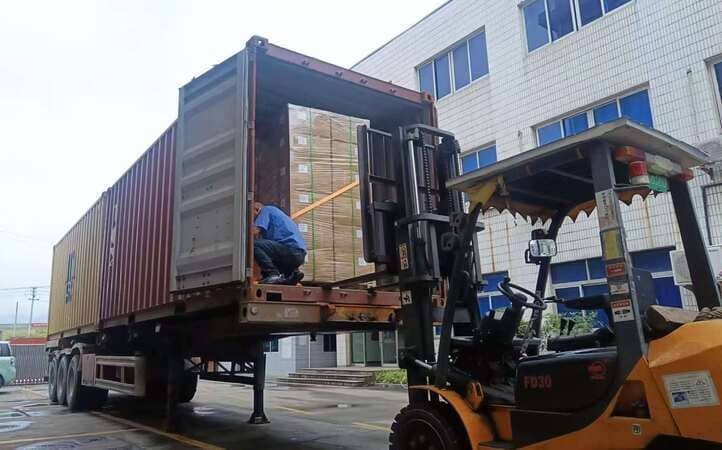I know the stress when a big project is waiting for silicone gaskets and every day of delay burns money and trust with your own customers.
You order bulk silicone rubber gaskets with fast delivery by preparing clear specs, choosing the right supplier and shipping method for your region, and building a simple repeat-order plan that protects you from lead time risks.

When I help overseas buyers, I never start from price. I start from their drawing, timeline, and risk. Once we make these clear, fast delivery becomes a predictable process instead of a gamble.
How should I prepare my gasket specifications to avoid delays?
Many buyers lose weeks before production even starts, only because the drawing is unclear or the material note is vague. I have seen this many times in real projects.
You avoid early delays by sending full drawings, material and hardness targets, operating conditions, and approval rules in one clean package. This lets the factory quote fast, tool fast, and ship with fewer surprises.
What information does the factory really need?
When I receive an inquiry for bulk silicone gaskets1, I can almost see the future timeline from the quality of the data. If the email only has a rough sketch and the word “silicone,” I know there will be back-and-forth questions and lost days. If the buyer sends a clear drawing, hardness range2, temperature3, medium4, and a simple approval plan5, everything moves fast and smooth. So I always teach buyers to prepare a small “ordering package6” before they send the RFQ.
Key specification checklist
I like to break it into a simple table that you can copy into your own process:
| Area | What you share with the factory | Why it helps fast delivery |
|---|---|---|
| Geometry | 2D / 3D drawing7 with all dimensions and tolerances | Reduces drawing questions and rework |
| Quantity | First order + annual forecast8 | Helps the factory plan molds and capacity |
| Temperature | Normal and peak temperature3s | Guides silicone grade choice and tool design |
| Hardness | Target Shore A range and tolerance | Avoids long discussion and wrong feel during samples |
| Medium | Water, air, oil, chemicals, cleaning agents | Prevents material changes after failed tests |
| Certification | Food contact, flame, or other approvals if needed | Ensures correct compound from the start |
| Approval rules | Sample quantity, tests, and decision criteria | Keeps both sides aligned on what “OK” means |
How temperature, hardness, certification, and chemistry affect speed
Temperature
If you tell me the real temperature window on day one, I can select a matching silicone grade and avoid later changes. If you hide this or do not know it, I may choose a safe but not perfect grade. Later, when your engineers test at higher temperature than expected, they may reject the samples. This means new material, new samples, and more weeks lost. So I always ask buyers to talk with their technical team first and write down real working and peak temperatures.
Hardness
Hardness is another simple but powerful lever. When you give me a clear Shore A target and a realistic tolerance, I can quote and mix material without delay. If the hardness note is missing, we must guess based on similar projects. Then you might feel the gasket is too soft or too hard during assembly, and we repeat the cycle. A short internal discussion about how easy the gasket should compress, and how stable it must be, saves you many days later.
Certification
If your project needs food-grade, drinking water, or other approvals, I must know this during the first email. Certified compounds and test reports take time and cost more. If we start with a generic grade and then your quality team9 asks for certificates, you will wait again while we change materials or run tests. So I always tell buyers to align with their QA team before they send drawings to me.
Chemical compatibility
Finally, I need to know what the gasket will touch. Water and air are simple. Oils, fuels, detergents, and cleaning chemicals are not. If you tell me the wrong medium or say “normal conditions,” I cannot choose the right grade with confidence. When we later see swelling, hardening, or cracks during your tests, we must repeat the material selection. This is why a short list of media and cleaning agents in the first email is one of the best tools for fast delivery.
Which suppliers and logistics options work best for fast bulk delivery?
Some buyers think speed only depends on air freight. In my daily work, I see that the main delay often comes from the wrong supplier type, not from the transport itself.
You get faster bulk deliveries when you match your volume and timing to the right supplier type, then choose a shipping method that fits your region and urgency instead of using one default for every order.

Matching supplier type to your deadline
When I support overseas projects, I rarely use only one supplier type. I mix local resources and my own factory in China. Local converters are perfect for emergencies and micro orders. My factory is better when the design is stable and quantities are higher. Between these two, some buyers also use distributors for standard sizes. When they try to use one channel for everything, they either pay too much or suffer from long lead times. A balanced strategy is much stronger.
Supplier type and logistics mix
Here is a simple way I explain it to buyers:
| Supplier type | Typical role in fast delivery | Best shipping method |
|---|---|---|
| Local converter | Emergency support, very small batches | Local courier or direct pickup |
| Regional distributor | Stock of standard gaskets | Ground transport within the region |
| Chinese OEM factory10 | Bulk custom gaskets with stable demand | Sea, rail, or air depending on urgency |
| Trader on platforms | Fills gaps when source is unclear | Depends, often less predictable |
How I choose transport for fast but realistic delivery
Sea, rail, and air
For truly bulk quantities, sea freight is still the base. It keeps unit cost low and allows large orders. However, I always suggest an overlap plan. While one full container or LCL shipment is on the sea, I prepare a small safety batch that we can send by air if you get urgent orders. Rail is useful for some regions as a mid-speed, mid-cost option.
Region and route
Your location shapes the best route. For example, when I ship to Europe, I often use sea for the main volume and sometimes rail for faster parts. For nearby Asian countries, sea is already fast enough, so air is only for emergency. When I discuss with a new buyer, I ask about their port, inland transport, and customs habits. This lets me plan realistic schedules instead of optimistic promises.
Buffer stock and shared risk
To make delivery really fast on your side, we often set up buffer stock. Sometimes the stock stays in my warehouse. Sometimes it moves to a third-party warehouse closer to you. We agree on a minimum and maximum level, and we link it to your forecast8. This way, you can pull pallets quickly when your own customers call. It also spreads risk because you do not need to pay for everything at once, and I can plan production based on more stable numbers.
When you build this mix of supplier types and logistics, fast delivery becomes a system. It no longer depends on last-minute air freight or pressure emails. It runs on clear rules that both sides can trust.
How can I control lead time risk11 for repeat silicone gasket orders?
I meet many buyers who manage each order as a separate story. They fight the same fires every few months. This is tiring for everyone.
You control lead time risk for repeat silicone gasket orders by setting a clear forecast, agreeing on realistic production and transport times, and creating simple reorder rules based on temperature, hardness, certification, and media requirements.

Turning one-time orders into a stable program
When I turn a first order into a stable supply program, I always think one year ahead. I ask the buyer to estimate yearly demand and typical project patterns. Then we divide the year into cycles. For each cycle, we plan production slots12, inspections, and dispatch. We also build quality and material rules into this plan, so there is no need to reopen technical discussions for every repeat order. This is where temperature, hardness, certification13, and chemical conditions again become very important.
Building a simple lead time model
I like to put the basics into a small table so everyone sees the same picture:
| Step | Typical content | Who owns it |
|---|---|---|
| Technical freeze | Drawings, material grade, hardness, approvals | Buyer + factory |
| Mold and samples | Tool build, sample run, approval tests | Factory |
| Normal production time | Mixing, molding, trimming, inspection, packing | Factory |
| Transport time | Sea / rail / air, customs clearance | Freight + buyer |
| Safety buffer | Extra time and stock to absorb small delays | Shared |
Once we agree on these steps, we can assign numbers. For example, we can fix a standard production lead time after technical freeze. We can link transport time14 to your chosen route. Then we decide how many weeks of safety stock15 we want. This model lets your team count backward from a project deadline and send purchase orders at the right time.
Using selection standards to keep repeat orders clean
Temperature and hardness
Because temperature and hardness are already fixed from the first project, repeat orders no longer need material discussions. This saves days of email and internal review. It also protects you from silent changes, because any proposal to change hardness or material must go through the same clear process as the first approval.
Certification and documents
For certified projects, I store all test reports, declarations, and certificates in one place. On your side, your quality team9 stores them as well. For repeat orders, we only update batch-level inspection reports. This keeps audits easy and avoids last-minute document hunting when an inspector visits your site.
Chemical compatibility
If your medium and cleaning agents remain stable, repeat orders are simple. If you plan to change chemicals, we discuss this early. We can then check if the current silicone grade still works or if we need a new compound. By doing this before you place the next order, we avoid emergency stops and material swaps while gaskets are already in production.
Custom Your Silicone rubber Parts with only Three Steps
When buyers are ready to turn one-time orders into a long-term plan, I usually ask them to send three things:
- The latest approved drawing in PDF and 3D if possible.
- The yearly forecast, even if it is only an estimate.
- A short note about temperature, hardness, certification, and media.
With this, I can prepare a clear proposal and timeline. If you want to try this approach, you can always reach me through www.rubberandseal.com or by email at info@rubberandseal.com. I treat every new project as a chance to remove friction from your supply chain, not just as a one-time order.
Conclusion
You order bulk silicone rubber gaskets with fast delivery when you send complete specs, match supplier and logistics to your volume, and turn repeat orders into a simple, shared plan.
-
Explore this resource to streamline your bulk silicone gasket orders and avoid common pitfalls. ↩
-
Understand how hardness affects gasket performance and selection for your projects. ↩
-
Find out how temperature considerations can impact the choice of silicone materials. ↩ ↩
-
Explore the various mediums that silicone gaskets can be compatible with for optimal performance. ↩
-
Discover how an approval plan can streamline the order process and align expectations. ↩
-
Learn how to create an effective ordering package to ensure smooth communication with suppliers. ↩
-
Discover why detailed drawings are crucial for reducing errors and speeding up production. ↩
-
Discover how effective forecasting can lead to better planning and resource allocation. ↩ ↩
-
Understand the critical role of quality teams in maintaining standards and compliance. ↩ ↩
-
Explore the advantages of partnering with OEM factories for bulk custom gaskets. ↩
-
Discover strategies to manage lead time risks effectively for repeat orders. ↩
-
Explore how planning production slots can enhance efficiency and reduce delays. ↩
-
Learn about the necessary certifications to ensure compliance and safety in your applications. ↩
-
Understand the key factors that influence transport time and how to optimize them. ↩
-
Learn how safety stock can mitigate risks and ensure timely deliveries. ↩








